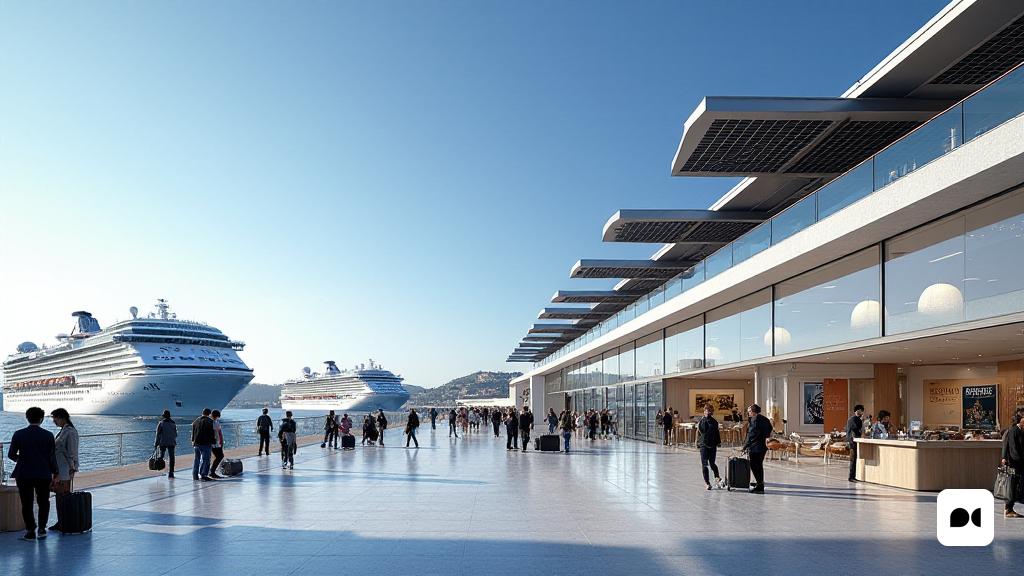A new age for maritime tourism
The MSC company has recently celebrated the inauguration of its innovative cruise terminal terminal at the terrace, in an event that was attended by Jordi Valls, Deputy Mayor for Economics, Finance, Economic Promotion and Tourism, as well as other prominent authorities. Called Terminal H, this new installation extends for more than 12,000 m² and has required an investment of approximately 50 million euros.
Operation and growth goals
From mid -February, the terminal has begun its operations and is expected to contribute to the MSC goal to reach 190 stairs in the port of Barcelona this year. In this initial phase, the terminal is receiving two weekly cruisers, although its infrastructure allows to accommodate a large daily ship with a capacity of up to 6,600 passengers, as Sandra Yunta, director of the new terminal, said.
Architecture and Sustainability: a double commitment
The design of the terminal is the work of the architecture studio of Ricardo Bofill, and shares aesthetics with the terminal 1 of the Barcelona airport. With three levels, the space includes a commercial area, an extensive turnover area and a waiting room with a capacity of 450 people, as well as a VIP space. According to Yunta, ‘our intention was to offer a service experience comparable to that of a cruise, in order to increase the flow of passengers in Barcelona’.
Environmental innovations
The building not only stands out for its architectural beauty, but also for its sustainable characteristics. It includes solar panels and isolation that improves energy efficiency. In addition, a system has been implemented to treat rainwater, in order to reuse them. In terms of energy, cruises are expected to be able to connect to the port electrical network during their stay, thus reducing the environmental impact.
Port restructuring and urban implications
The inauguration of the new terminal has allowed to close the north and south maritime terminals, located near the World Trade Center, thus releasing space for the citizenry. This restructuring is part of the Barcelona City Council’s strategy to reach an agreement with the port, with the aim of reducing the number of cruise terminals and controlling the massive arrival of tourists in the city, promoting more sustainable and balanced tourism.
Looking to the future
With this new terminal, Barcelona is positioned as a top -notch maritime destination, with a firm commitment to sustainability and the improvement of the passenger’s experience. As the city seeks to balance tourism with the quality of life of its residents, this initiative represents a significant step towards a more sustainable and responsible future.

